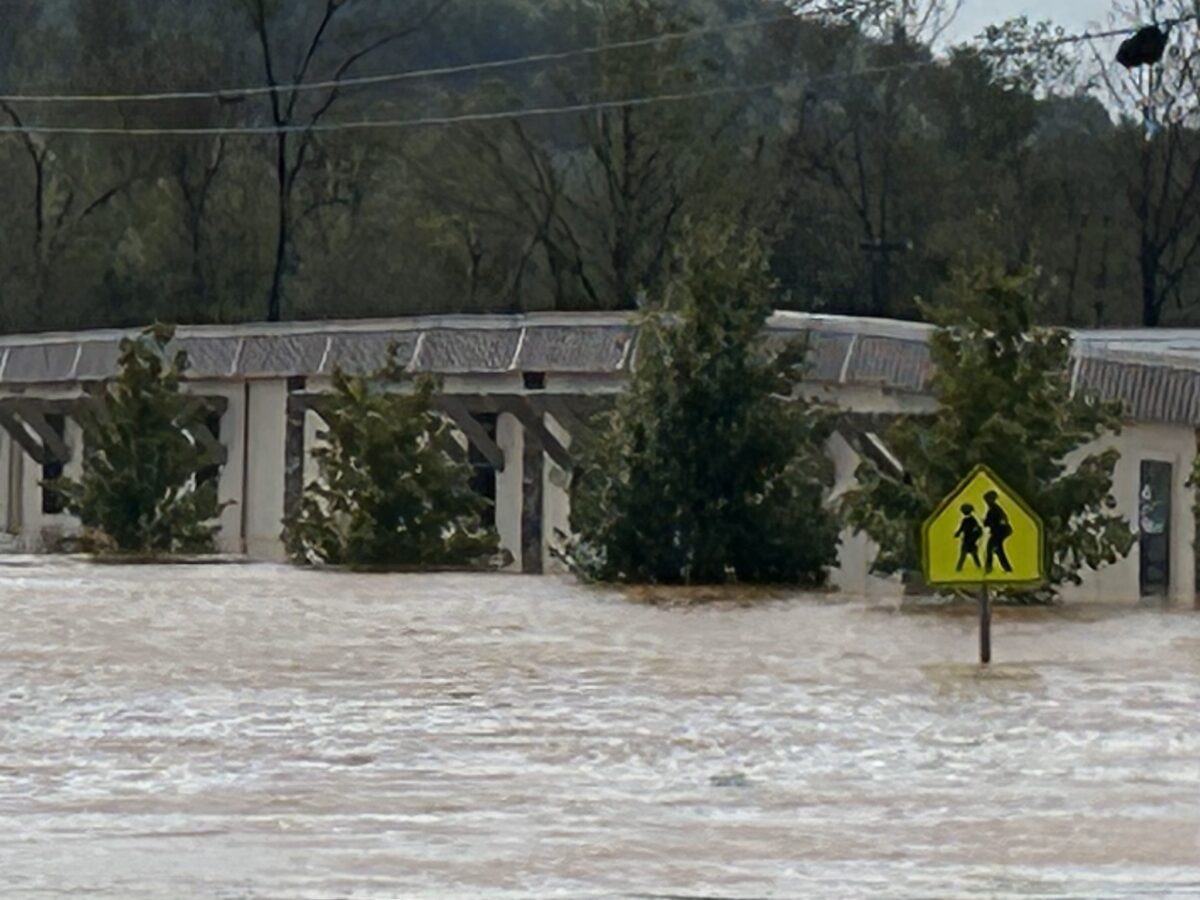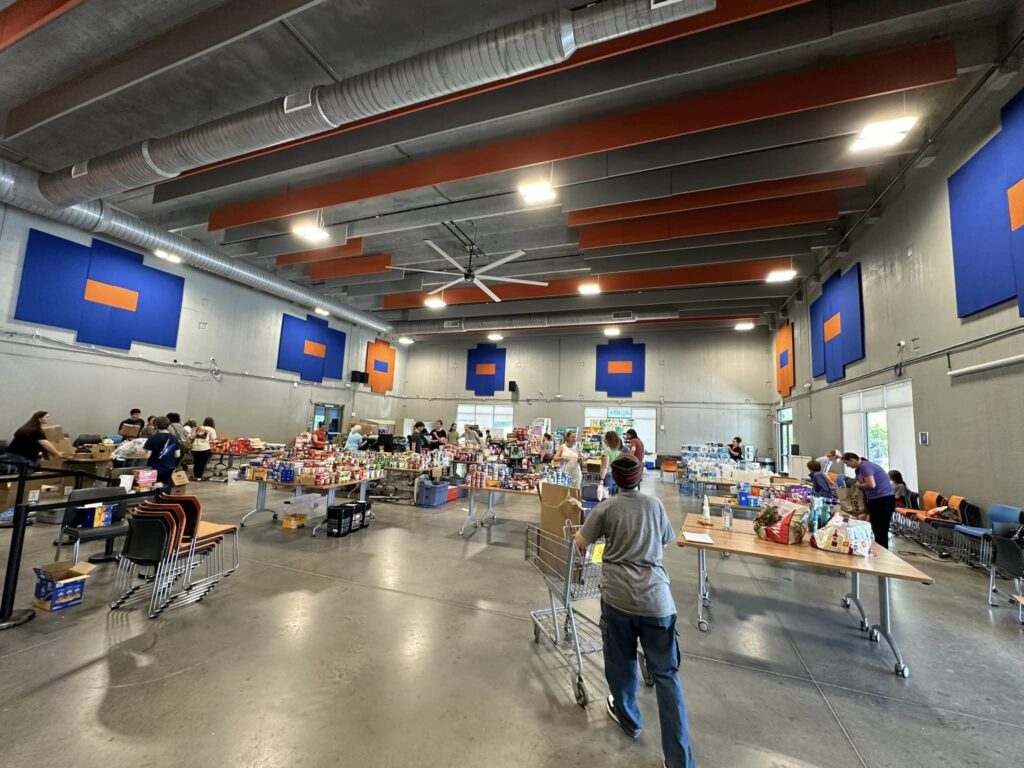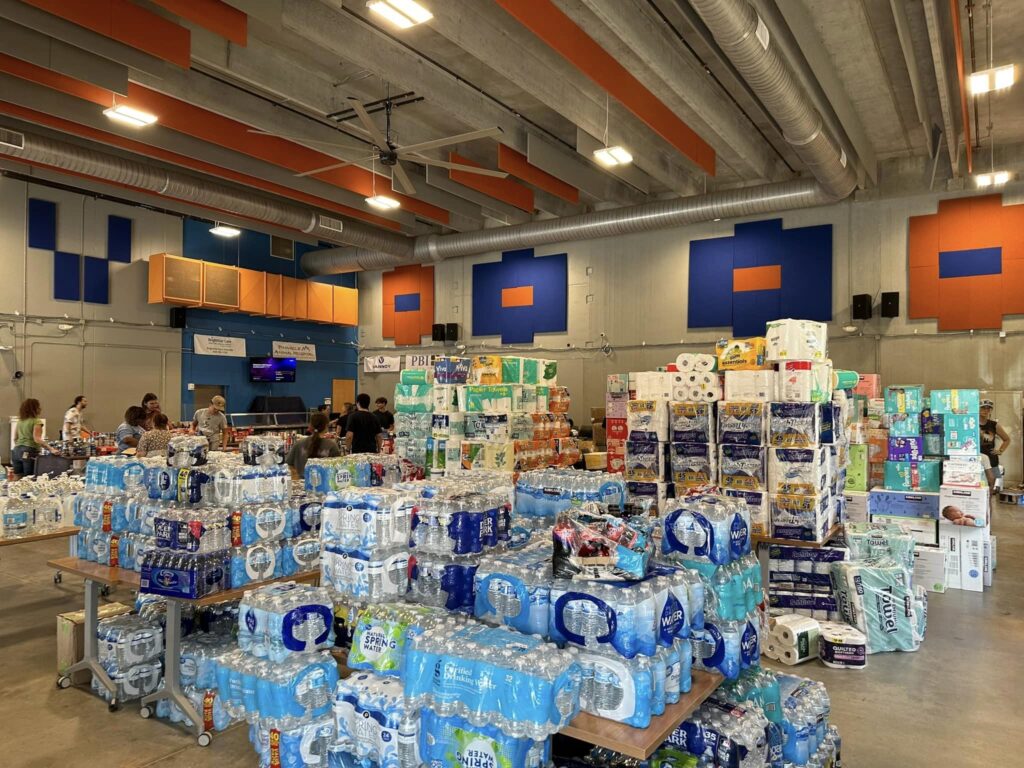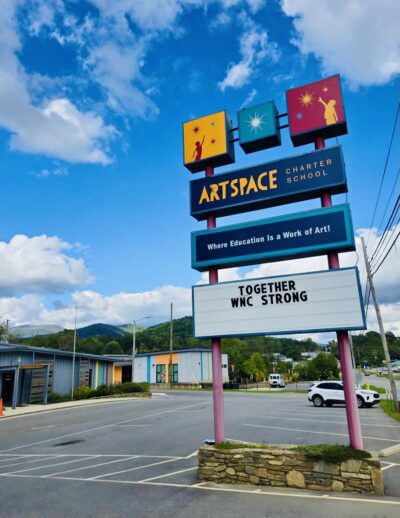
|
|
Kristen Blair is a communications consultant and Chapel Hill-based education writer. She has written for EdNC since 2015. She currently serves as the communications director for the North Carolina Coalition for Charter Schools.
Early news reports captured the ferocity of Hurricane Helene’s flooding in western North Carolina, but the storm’s devastating impact on individual communities and schools is only starting to unfold. At public charter schools affected by the storm, dueling, deep emotions prevail: gratitude for lives spared, but sorrow over destruction and loss.
In Fletcher, Helene’s floodwaters destroyed FernLeaf Community Charter School’s Creek Campus, a school home to 430 students in kindergarten through fourth grade.
“The buildings were knocked off their foundations,” said Michael Luplow, FernLeaf’s executive director. “The flood waters were in excess of four feet high. It is just an absolute catastrophe.”
As FernLeaf’s primary founder, Luplow feels the loss on a visceral level. “It is something to behold when your life’s work — that you have worked so hard to create on behalf of others — is literally ripped out from underneath you,” he said.
Yet, he also feels “extraordinarily lucky and grateful” that his school community appears to have weathered the storm intact.
“Buildings can be replaced. Books can be replaced. People cannot,” he said.
‘We just don’t know the full impact‘
Twenty-one charter schools in North Carolina’s federally designated disaster areas have reported storm impacts, according to Ashley Baquero, executive director of the state’s Office of Charter Schools. Destruction and dislocation have come in layers. In addition to campus damage, staff and families at some schools lost their homes. Many have gone days without power, water, cell service, or internet; some have relocated temporarily.
In Asheville, even charter schools with minimal facility damage still lack water. It is a peculiar paradox — that surging water destroyed the city’s water infrastructure and cut off its water supply.
The scope of damage, with all of its financial implications, remains unclear.
“It’s very similar to what we’re hearing about the districts,” Baquero said. “We just don’t know the full impact of it.”
Schools’ initial priority, Baquero said, has been checking on people: “Where are staff? Where are students? What are the immediate, urgent needs that they have?”
Some schools were able to account for staff and students quickly; others, plagued by connectivity challenges, have struggled to reach families. Schools have utilized surveys, social media, phone calls, and text messages to connect with communities. They have been assessing safety but also access to resources, such as housing and utilities.
Facility damage at most schools appears limited. “The majority have what they believe (are) hopefully minor issues,” Baquero said. Some charter schools in disaster areas have reopened already.
‘We’ve been hearing a lot about water‘
Yet for others, daunting obstacles block the path to reopening. Power and internet are coming back slowly. Roads need repair. Cell service is spotty. For the Asheville schools relying on city water, restoration may take weeks. The city is posting updates daily, but has said establishing a restoration timeline was an “impossibility.”
“Water, water: We’ve been hearing a lot about water,” Baquero affirmed. “We have some schools that are not damaged and would be able to open, but they don’t have water.”
The operations coordinator for Francine Delany New School for Children in Asheville, Britney Ross is grateful for minimal facility impacts.
“We’ve been very lucky because we had minor structural damage,” she said.
Staff and families are safe, and the school, which serves 193 students, now has internet. But uncertainty looms. The lack of clarity on water restoration has stymied reopening plans.
“How do we plan for operating our school when we don’t know?” she asked.
Three staff members joined Ross for this interview, voicing a common theme: the need for communication and guidance from authorities.
Michelle Vruwink, the executive director at Franklin School of Innovation in Asheville, shared similar concerns. Her team is assessing “every possible option to look at a water solution,” she said. “We’ve heard weeks; we’ve heard months. And ‘months’ is an unacceptable answer at a school.”
On Oct. 11, guidance intended to help schools consider opening steps if they are currently without primary utilities or otherwise damaged was shared by DPI with charter schools.
Amid mounting needs, lean budgets create anxiety
Even as some charter leaders grapple with the possibility of extended closures and remote learning, they know students will require additional help when schools reopen.
“We are going to need support for mental health,” said Ross. “We are already paying for our school nurse out of our operating budget, which we have to fundraise for. It’s just tricky. That’s one of the hardships of being really small — but we can also take really good care of our kids because we are so small,” she added.
Leaders worry that mounting needs — such as tutors, social workers, meals — will strain stretched budgets.
“Margins are so thin” already for charter schools, Vruwink said. “Fifty thousand dollars in your budget in a charter school? You have a heart attack. Every dime, you spend it twice.”
The North Carolina Coalition for Charter Schools is working to secure relief funding and help with displaced students, said Lindalyn Kakadelis, the executive director.
“Public charter schools already operate on lean budgets. As the fallout from Helene moves from the critical life-and-death response effort to longer-term recovery, I’m most concerned about how public charter schools will piece together the funding they need to become operational again,” she said.
“We know from previous disasters that the web of rules governing federal aid programs can confuse and frustrate even the most sophisticated applicants. I’m an eternal optimist, but I fear there might be a long and painful road ahead.”
Disaster relief and community support
State lawmakers returned to Raleigh last Wednesday, passing House Bill 149 to establish the Hurricane Helene Disaster Recovery Fund. Gov. Roy Cooper signed the bill into law on Thursday. This initial bill appropriates $273 million in relief funding, including $16 million for lost pay for school nutrition employees. It authorizes calendar flexibility and remote instruction for public schools in disaster areas. In addition, it holds school employees harmless for lost days in terms of compensation; this provision is optional for charter boards.
More relief legislation is coming. House Bill 149 is just a “first step,” legislative leaders affirmed at a press conference last week. Lawmakers return to Raleigh on October 24.
Meanwhile, community support — coming from and to schools — has been extensive. Franklin School of Innovation opened its facility quickly, sharing access to power and WiFi, and distributing water, food, and other supplies.


ArtSpace Charter School in Swannanoa posted its partnership with faith-based nonprofit Mercy Chefs on its Facebook page, providing free hot meals to families.
Staff and families are, in turn, rallying to support their schools. Laura Dixon, the interim executive director at The Mountain Community School in Hendersonville, indicated that the school had received “tremendous faculty, staff, and family support” at a campus clean-up day as well as a “fantastic response” to a school donation drive in the gymnasium.
The state’s broader charter community is also mobilizing to help. The North Carolina Association for Public Charter Schools, along with the Coalition, launched an “Adopt a WNC School” initiative. As of early last week, charter schools had adopted seven impacted schools, said Meredith Flowe, the association’s chief of staff. Matching is ongoing, said Flowe, but 11 additional charter schools “are ready to adopt a WNC charter school as soon as those schools have their needs lists finalized.”
At Community Charter School in Stanley, Monica Dellinger, the executive director, and her school are working to support Brevard Academy in Pisgah Forest. Some Brevard Academy staff members lost everything, Dellinger said. One injured student was airlifted to a Charlotte hospital.
“Let me go fill the gap for you all,” Dellinger said she told Ted Duncan, Brevard Academy’s leader, when she heard of the hospitalized boy.
She drove to Charlotte to visit him and his grandparents, bringing three bags of care packages to the hospital. Her school posted a call for games, playing cards, and gift cards for Brevard Academy’s community. The request spread “like wildfire” across social media, Dellinger said.
What about FernLeaf’s displaced students? Luplow plans to open his Wilderness Campus, located a mile from the ruined Creek Campus, to all students on Oct. 16. Before Helene, the Wilderness Campus served middle and high school students. Now, it will accommodate K-4 students, too — on a rotating schedule, until the second phase of Wilderness Campus construction wraps in early November. School leaders had planned construction with a vision for future growth, so there is room — for now, until they can craft a permanent solution.
Community cohesion is strong, yet pain runs deep.
“This devastation in our area is only serving to bring our community together,” Luplow said. But “our staff is heartbroken. Our parents and our students are strong, but they’re wrecked,” he added.
“We are anxious for our story to get out there to rally more support for our efforts, but also for people to understand how devastating this is.”



